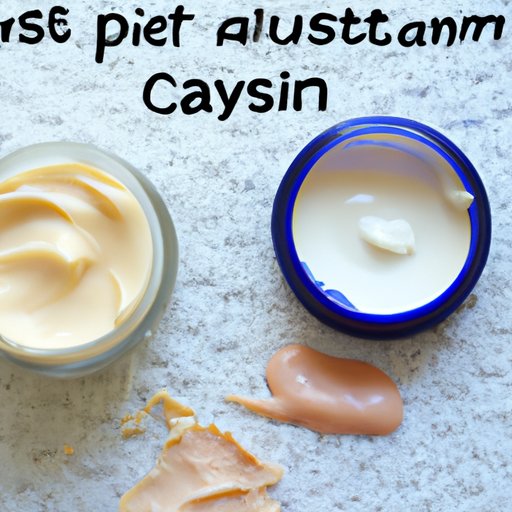Introduction
Yeast infection on skin is a common condition caused by an overgrowth of the fungus Candida albicans. It can cause redness, itching, rashes, and other uncomfortable symptoms on the affected areas. Though it’s mostly harmless, it can be disruptive and irritating, and it’s important to take steps to treat and prevent it.
Treatment Options
If you have a yeast infection on your skin, there are several treatments available that may help alleviate your symptoms. Here are some of the most common treatments:
Use Antifungal Creams
Antifungal creams are one of the most common treatments for yeast infection on skin. These creams are applied directly to the affected area and work by killing the fungus that causes the infection. They are usually available over-the-counter, but you may need a prescription if the infection is severe.
Try Home Remedies such as Apple Cider Vinegar or Yogurt
There are also several home remedies that may help with yeast infection on skin. For example, some people find relief from soaking in a bath with apple cider vinegar added to the water. Others recommend applying plain yogurt directly to the affected area. However, it’s important to note that these home remedies may not be effective for everyone.
Keep the Infected Area Dry and Clean
It’s also important to keep the infected area dry and clean. This means avoiding tight clothing that may trap moisture against the skin, and using warm water and mild soap when showering or bathing. After bathing, make sure to thoroughly dry the affected area.
Wear Loose-Fitting Clothes
It’s also important to wear loose-fitting clothes whenever possible. Tight clothing can irritate the skin and trap moisture, which can worsen the infection. Choose breathable fabrics like cotton instead of synthetic materials like polyester.
Avoid Tight Clothing
In addition to wearing loose-fitting clothes, it’s also important to avoid tight clothing, especially in the areas where the infection is present. This includes socks, underwear, and swimsuits. If possible, go for clothing made of natural fibers like cotton or hemp which are more breathable.
Take Probiotics
Probiotics are live bacteria that can help restore balance to the gut microbiome. Taking probiotics regularly may help reduce the risk of developing yeast infections on skin. You can find probiotics in supplement form, or you can get them from fermented foods like yogurt and sauerkraut.
Consult Your Doctor for Prescription Medication
If the infection persists despite other treatments, it may be necessary to consult a doctor for prescription medication. Your doctor may prescribe oral antifungal medications or topical creams to help clear up the infection. In some cases, they may also recommend special shampoos or soaps to help manage the symptoms.
Conclusion
Yeast infection on skin can be annoying and uncomfortable, but fortunately, there are several treatments available that may help. From using antifungal creams to trying home remedies such as apple cider vinegar or yogurt, there are many ways to address the problem. Additionally, it’s important to keep the affected area dry and clean, wear loose-fitting clothes, and avoid tight clothing. Taking probiotics may also help reduce the risk of developing yeast infections on skin. If the infection persists, it’s best to consult a doctor for prescription medication. With the right treatments and prevention tips, you can get rid of yeast infection on skin and keep it from coming back.


